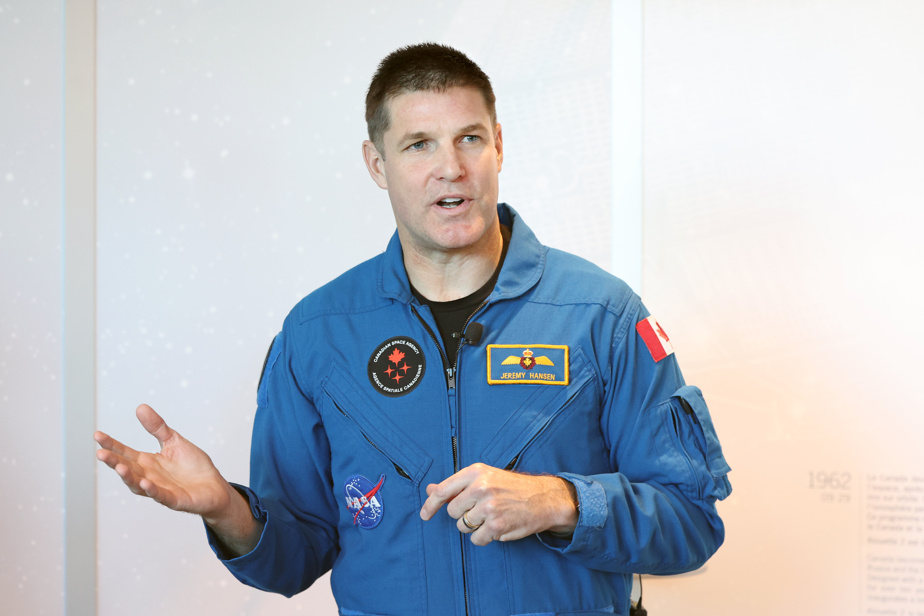(Ottawa) Good God, but why did he accept a mission from which he might never return?
This is the question that Canadian astronaut Jeremy Hansen is asking himself as he continues his training for the Artemis II mission which will take him around the Moon.
Mr. Hansen says he finds his answer in the footsteps of those who preceded him and allowed Canada to have its place in lunar exploration.
The astronaut is himself a pioneer since he will become the first Canadian to contemplate the lunar surface so closely.
Artemis II, organized by NASA, is the first lunar mission since 1972.
“We have to go back to the decisions made in the 1960s in Canada when people understood that space could help improve life on our planet,” said Mr. Hansen during an interview with The Canadian Press.
Canada will be only the second country to send one of its astronauts this far into space.
Mr. Hansen, a big fan of science fiction stories, repeats it twice.
How have we got there? The credit goes to visionaries. That’s what happened. This is what we have achieved for decades to get where we are.
Jeremy Hansen
Mr. Hansen will accompany three other American astronauts when the Artemis II mission takes flight in September 2025.
Among them, Reid Wiseman. The Canadian has known him since 2009 because they followed the same training at NASA. The other two are Victor Glover and Christina Hammock Koch.
“I feel like I’ve known this crew for a long time. We have passed the initial stages of a relationship,” says Mr. Hansen.
The Canadian Space Agency and NASA have been collaborating since 1982. But there is still no guarantee that Canada will maintain its privileged position for much longer.
If Canada wants to remain an important partner, it will have to continue to make very visionary and very strategic investments. We must inspire ourselves and remember that we have achieved extraordinary things. We must not denigrate ourselves.
Jeremy Hansen
It hasn’t always been easy for Canadian astronauts to establish themselves among their American colleagues, agrees Mr. Hansen, who describes himself as being “very integrated.”
The astronaut says he stands on the shoulders of giants like Marc Garneau, the first Canadian to have been in space.
“We have a good reputation thanks to them. When I arrived, I think all our youthful problems are behind us,” he says.
According to him, creating a culture where communication plays an essential role is the main challenge that the Artemis II crew will face.
We must even take the time to talk about the failures, the luck and the death that perhaps awaits on the shadow side of the Moon.
Astronauts must have complicated conversations to minimize the risk of losing a crew member, but “while recognizing that zero risk is unattainable.”
This month, Mr. Hansen says, the astronauts underwent stressful training on the waves of the Pacific Ocean.
The objective was to stimulate the return of their capsule to Earth.
“I think I’ll realize I’m going to the Moon a few days before takeoff, when I say goodbye to my family, when I make sure all my things are in order,” he says. I will sometimes feel fear. »
